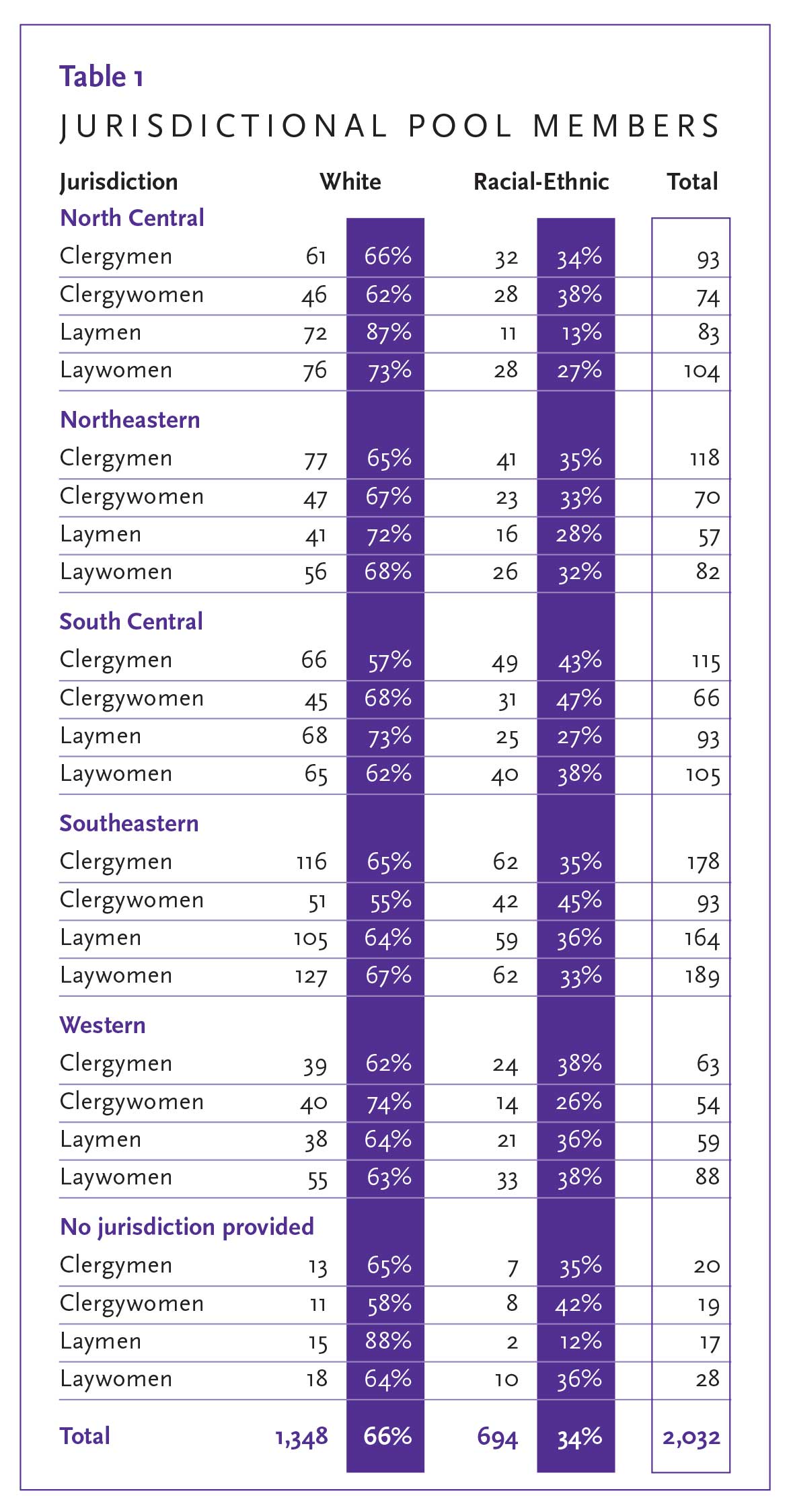Current U.S. lay membership in The United Methodist Church is about 8 million. Of those, nearly 60% are women and 40% are men.
Women are increasingly represented on churchwide agencies. However, more than half of churchwide agency members are also General Conference delegates. Is our leadership table still more insular than truly inclusive?
By Lindsey Graham and Elaine Moy
Overall participation of women directors of general church agencies has increased, (although men are better represented), when one compares churchwide membership.
However, we found the five U.S. jurisdictions were more likely to give seats to the board of directors of general agencies and those already holding leadership positions than to new-toleadership people.
What does it mean that so many U.S. agency voting members were (or are) General Conference delegates? A positive interpretation is that the five regions recognize and send to the agencies persons with a proven commitment to church leadership and to participation in the global work and witness of this denomination. There is also more likely to be continuity in our corporate Christian work.
However, a potential drawback to the jurisdictional nominating process is that the task of setting churchwide policy, practices, mission and ministry has remained in the hands of a minority of persons, and a new, broad, more diverse group of leaders is missing from the denomination’s leadership tables.
Current U.S. lay membership in The United Methodist Church is about 8 million. Of those, nearly 60% are women and 40% are men.
Additionally, there are nearly 45,000 United Methodist clergypersons in the United States (including elders, deacons and local pastors). Men represent 77 percent of the clergy, women 23 percent.
In the January-March 2009 issue of The Flyer, we explained that the jurisdictional pool is the collection of persons from which the five jurisdictional nominating committees name regional representatives to the churchwide agencies every four years.
In 2008, each nominating committee of the five U.S. jurisdictions recommended from the pool—and their respective jurisdictions approved—356 persons to serve as board members of general agencies. They have decision-making power to direct and guide where these agencies will be working and serving the church in the next four years. (These numbers do not include General Commission on Archives and History and the General Commission on United Methodist Men, which have different processes for membership.)
In 2008, laywomen represented the largest group in the total U.S. jurisdictional pool, with 596 (29%), followed by 587 clergymen (29%), 473 laymen (23%), and 376 clergywomen (19%). In total, women comprise 48% of the jurisdictional pool, slightly less than parity according to total U.S. membership, and men are represented at 52%.
The Book of Discipline (Par. 705) recommends that the jurisdiction membership on each program board incorporate one-third clergy, onethird laymen and one-third laywomen. However, the aggregate number of people in the 2008 jurisdictional pools—and those finally assigned to agencies—do not follow that recommended formula.
Of those 356 elected board members last year, 105 were clergymen (29%), 98 were laywomen (28%), 92 were laymen (26%), and 61 were clergywomen (17%).
Clergymen make up 61% of the clergy in the jurisdictional pool while they were 64% of the clergy assigned to agency boards. Clergywomen made up 39% of the jurisdictional pool and were 37% of the clergy assigned to boards, which is above parity.
Laymen were 45% of the laity in the jurisdictional pool and 48% of the laity named to boards of directors. Laywomen were 56% of the laity in the jurisdictional pool and 52% of the laity elected.
In addition, of the 356 persons assigned to agencies for the current quadrennium, 216 (61%) were delegates (172 people or 48%) or reserve delegates (44 people or 13%) to the 2008 General Conference. Of the 172 board members who were also General Conference delegates, the largest group was clergymen with 32% (56), followed by a tie of 26% laywomen/ laymen (44), and 16% clergywomen (28).
Of the remaining 140 persons assigned from the jurisdictions to churchwide agencies, 60% had been delegates to previous General Conferences.

Lindsey Graham is website coordinator for GCSRW.
Elaine May is assistant general secretary for GCSRW.
